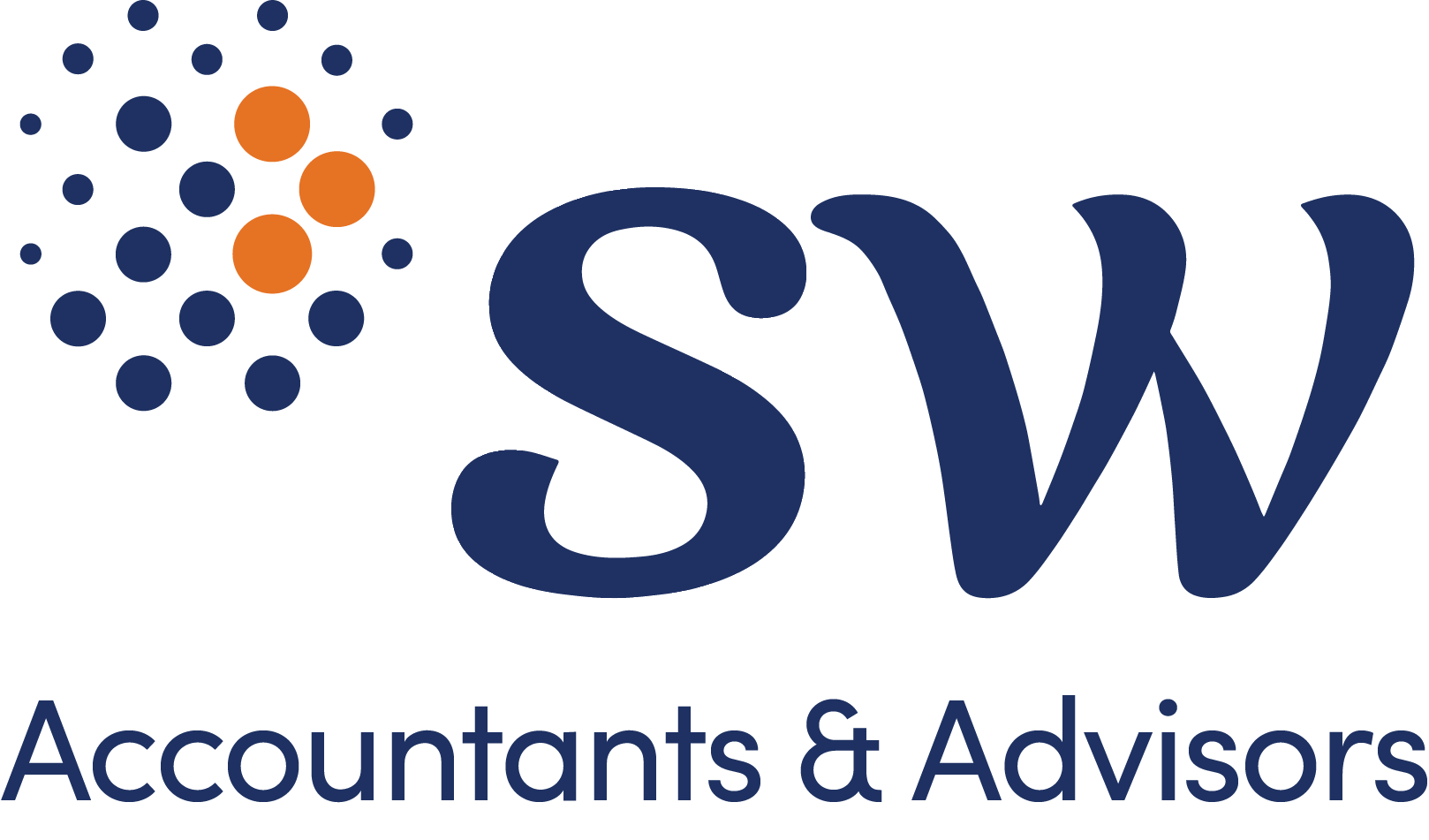
We are delighted to announce the appointment of our newest Partners, Chris Dexter and Jeremy Wicht.
We are delighted to announce the appointment of our newest Partners, Chris Dexter and Jeremy Wicht. We now have 36 Partners servicing clients across our Brisbane, Melbourne, Perth and Sydney offices. With an 85+ year history in Australia, the expansion of our Partnership team reflects the strong demand and ongoing support from our clients.
We look forward to seeing Chris and Jeremy continue their outstanding contribution as they open doors to opportunity and deliver quality outcomes for our all people and our clients.
The Mental Health and Wellbeing Levy will fund a complete rebuild of the mental health program in Victoria. This will be implemented as a payroll tax surcharge and come into effect from 1 January 2022.
What is the Mental Health and Wellbeing Levy?
The Mental Health and Wellbeing Levy was a recommendation of the Victorian Government’s State Mental Health Royal Commission which found the mental health system operates in crisis mode, fails patients and requires a complete rebuild.
In order to rebuild and implement a range of mental health services as recommended by the Royal Commission, a levy is required to fund this program.
All revenue collected by the levy will be required to be spent on the provision of mental health services.
When does it come into effect?
The levy will be implemented as a payroll tax surcharge and will come into effect from 1 January 2022.
Who is it applicable to?
Employers must pay the surcharge if they pay Victorian taxable wages and Australian wages exceed the first annual threshold of $10m, with a first monthly threshold of $833,333.
Employers must also pay an additional surcharge if they pay Victorian taxable wages and Australian wages exceed the second annual threshold of $100m, with a second monthly threshold of $8,333,333.
How much is the levy?
The surcharge will be levied at the following rates:
- 0.5% of the portion of Victorian taxable wages above $10m
- 1% of the portion of Victorian taxable wages above $100m
If employers are members of a group, these thresholds apply at the group level.
These annual thresholds will be adjusted proportionately if an employer does not employee for a full financial year.
In respect of the period from 1 January 2022 to 30 June 2022 (transitional period), the respective annual thresholds are $5m and $50m.
Employers which are currently exempt from payroll tax, such as private schools, hospitals, charities and local councils will not be required to pay the levy.
When is this levy to be reported and paid ?
The surcharge will be payable when the payroll tax payment is due.
For example, if an employer pays payroll tax monthly, the employer will also pay the surcharge monthly. If an employer pays payroll tax annually, the employer will pay the surcharge annually.
What employers need to do prior to 1 January 2022 to get ready?
The surcharge will be separately calculated from the monthly or annual payroll tax calculation, however, the surcharge will be included in the same monthly or annual return.
Employers will not need to register with the State Revenue Office and will not lodge separate returns.
How can SW help?
Our team can:
- Assist with the payroll function – SW can assist employers understand and become familiar with the new requirements to make this change as seamless as possible.
- SW can prepare/review monthly or annual payroll tax reconciliations to ensure taxable Australian wages have been calculated correctly including determining if exempt wages have been identified and correctly classified.
- SW can provide assistance and advice where employers employ in other Australian jurisdictions during the financial year. For example, annual thresholds are required to be adjusted by the ratio of the total Victorian taxable wages to total Australian wages.
Contributors
Janelle McPhee
Joshua Teo
AUSTRAC has produced four risk assessments for Money Laundering and Terrorism Financing (ML/TF) in the Australian banking sector for major domestic banks, other domestic banks, foreign subsidiary banks and foreign bank branches in Australia.
Following engagement with bank representatives and industry experts, and analysis of transaction reports and partner agency intelligence reports, the four new ML/TF risk assessments offer insights into ML/TF activity in the subsectors and details of key risks each subsector is exposed to.
Major banks
The AUSTRAC risk assessment found that major banks face a high risk of ML as the subsector has a very large customer base with customers in high-risk categories, high exposure to cash, increases in remote service delivery channels and high exposure to foreign jurisdiction risk.
Red flags for cash-related ML risks include successive cash deposits at ATMs to the same account by different individuals, and use of the same mobile number for verifying deposits to multiple beneficiaries.
Other domestic banks
Other domestic banks are also exposed to individuals charged with money laundering-related offences, as well as members of serious and organised crime groups.
Common concerns include unexplained wealth, where the source of funds could not be determined and was inconsistent with the customer’s profile; multiple transactions when one transaction would suffice; and rapid or complex movement of funds through multiple accounts.
Foreign bank branches
The average value associated with money laundering in the foreign bank branches subsector is much higher than other banking subsectors.
Clients with complex company ownership structures and intricate onshore and offshore banking arrangements are assessed to be the highest risk for money laundering.
Risk factors include obscuring beneficial ownership or source of funds; receipt of high-value international transfer of funds, and rapid and complex movement of funds between multiple companies linked by shareholders; trusts and beneficial owners and companies moving funds to high-risk and tax secrecy jurisdictions.
Foreign bank branches often follow AML/CTF programs that are developed by the head office, and may not always be suitable for the Australian market.
Foreign subsidiary banks
Money-laundering for foreign subsidiary banks predominantly relates to cash and transaction account-based services.
Suspicious transaction activity includes multiple transactions (potentially without economic rationale); and large and unusual transactions and activity inconsistent with a customer’s profile.
The subsector’s large retail banking footprint enables customers to place cash directly into the financial system, and offers multiple products and services that enable fast and efficient movement of funds.
Red flags include unclear source of funds; multiple large cash transactions, particularly in a short period of time; and multiple third-party deposits.
Risk mitigation strategies
- Remain vigilant of key criminal trends in Australia
- Perform a risk assessment where a new system is introduced, or where there is a change in a system, product or service
- Tailor off-the-shelf risk assessment tools to be business specific and reflect the risks posed
- Understand the customer’s source of funds and wealth, expected account activity, ownership structure and associated and controlling parties
- Proactively detect higher-risk customers, and have elevated risk mitigation strategies for Politically Exposed Persons (PEP)
- Perform high-quality investigations for the submission of Suspicious Matter Reports (SMR) to AUSTRAC
- Provide appropriate staff training and screen employees.
How we can help
Whichever banking subsector your business falls into, our teams are across anti-money laundering and counter-terrorism financing (AML/CTF) regulations in Australia and highly experienced in conducting reviews and providing recommendations for your AML/CTF program.
Reach out to our experts for:
- an obligation free discussion regarding your current program
- an AML/CTF gap analysis
- a full review of your AML/CTF program, and expert recommendations.
Contributors
From 1 July 2020, the cents per kilometre deduction rate for car expenses will rise to 72 cents per kilometre (previously 68 cents). The new rate will apply until such time that the commissioner determines that a change to the rate is necessary and continues to apply to the 2022 tax year.
The cents per kilometre method can be used by sole traders or individuals in a partnership to claim a deduction in respect of car expenses incurred in the carrying on of business.
The deduction amount is calculated by multiplying the number of business kilometres travelled by the cents per kilometre rate. Individuals can claim a maximum of 5,000 business kilometres per car, per year using the cents per kilometre method.
It is important to note that while written evidence is not required to show the number of business kilometres travelled, the ATO may request some evidence to show how the amount was calculated, therefore it is recommended that diary records be kept.
Seize the opportunity as lockdowns ease and the new normal begins. Hear amazing consumer behavioural insights, ways to maximise the long run benefits of the tourism surge and support programs to assist.
With a national plan in place to transition Australia’s National COVID-19 Response to allow visits to regional areas, plus the festive season fast approaching, it is anticipated the wine sector will see a massive increase in sales and visits to their wineries. We’ll be exploring the issues and long-run opportunities for Australian winemakers to make it more than a sugar rush with real life consumer data and insights from a range of experts!
Join us and experts as we explore:
- Consumer wine behaviour trends before, during and after lockdown
- How wineries can attract visitors and convert them into long term customers
- How wineries can create a more stable and sustainable business over the long term
- What grants are available and how to access them.
Your guides online
 Tom Mullarkey Partner, SW |  Mark O’Callaghan Managing Director, Wine Network Consulting |  Sam Morris Director, SW |
 Robin Shaw Founder & Lead Consultant, Wine Tourism Australia |  Michael Whitehead Head of Agribusiness Insights, ANZ |
As a result of ongoing political tensions related to the Government’s management of the JobKeeper payment, the Senate used an otherwise unrelated bill to drive debate over disclosure requirements for publicly listed entities which received the JobKeeper payments in 2020 and early 2021.
On 13 September 2021, the Treasury Laws Amendment (2021 Measures No. 2) Bill 2021 received Royal Assent passing these provisions into law commencing 14 September 2021.
Development of the Bill
This Bill was amended to introduce changes to the Taxation Administration Act 1953 to require that the Commissioner of Taxation publish certain information relating to recipients of JobKeeper. However, this particular amendment did not pass the Senate.
After some political wrangling, an amendment was proposed by Senator Hanson moving that requirement to ASIC under the Corporations Act 2001 and was supported by the Government which then successfully passed both Houses.
A schedule was included in the Bill to require Australian listed entities to announce information about JobKeeper payments to the market via a new division in part 2M.3 of the Corporations Act 2001.
Foreign listed entities that have no requirement to lodge financial statements with ASIC, would not be required to lodge a notice under these provisions as they do not lodge financial reports under Division 1 of part 2M.3 of the Corporations Act 2001.
Non-listed entities similarly have no such requirement.
No explanatory memorandum is available in respect of this amendment.
What needs to be disclosed?
Listed entities must give notice to the ASX or relevant market operator containing details (for JobKeeper fortnights within that financial year) as follows:
- the listed entity’s name and Australian business number (ABN)
- the number of individuals for whom the entity or entities received a JobKeeper payment
- the sum of all JobKeeper payments received
- whether or not the entity or entities made one or more voluntary repayments (whether or not in the financial year) to the Commonwealth together with the sum of those repayments.
The requirement applies regardless of whether the entity has already disclosed equivalent information in financial reports, previous announcements or other documents.
On 15 October 2021, ASIC has announced a notice and guidance to help listed entities comply with their new obligation. The online form permits a listed entity to fill in all the necessary information which will then generate the JobKeeper (section 323DB) notice. While not mandatory, we note that the ASX has requested that entities use that form. The form generates a PDF of the notice which must then be given to the market operator.
Listed@ASX Compliance Update 09/21 confirmed that the JobKeeper disclosure should be as a standalone announcement which should clearly state that it is a “JobKeeper payments notice.”
Which amounts do we disclose?
The ASIC FAQs and legislation both refer to the disclosure of payments received for a JobKeeper fortnight that ended in an entity’s relevant financial year, essentially on a cash basis. Should an entity wish to make a further disclosure, i.e. to reconcile the payments to accruals-based disclosures in its financial statements, then a separate announcement should be made to the market operator.
Note there is no requirement for the information to be audited.
Which periods will require disclosure?
The information must be provided for any financial year in which an entity has received a JobKeeper payment.
For example, for June year end entities, this may include the financial years ended 30 June 2020 and 30 June 2021.
When must we make a disclosure?
This depends upon when the entity lodges its financial report with ASIC for the relevant financial year:
- if the financial report has been lodged on or before 14 September 2021 – within 60 days after that date (i.e. Saturday 13 November 2021 or nearest relevant business day – likely to be 15 November 2021 based on ASIC rules).
- otherwise, within 60 days after lodging the financial report with ASIC.
Where a notice needs to be corrected or updated, the entity is required to provide an updated notice to the market operator within 60 days.
How will our information be used?
ASIC is required to publish and regularly update a consolidated report of all notices given as soon as practicable after they are released to the market.
Are there penalties for a failure to comply?
The penalty for failure to lodge a required notice within the time frames required is listed as 60 penalty units (AUD $13,320).
Get in touch
Reach out to your SW advisor or one of our experts on how to navigate these changes
Contributors
Learn the major changes in the Victorian property and tax landscape.
Co-hosted with Bridgestone Property Group and Align Law, our experts discussed:
- Commercial real estate market update and recent transactions
- Windfall gains tax
- Build to Rent Concessions
Your guides online
 James Ye Director, SW |  Robert Parker Consulting Director, SW |  Chao Zhang Director, Stonebridge Property Group |
 Amber Li Property Law Principal, Aglin Law |  Barnaby McIlrath Planning & Environment Counsel, Align Law |
Join our three-part Estate Planning & Power of Attorney webinar series.
Each session will focus on topics that are of particular importance when putting a strategy in place to deal with your assets and investments when you pass away.
You are welcome to share this page with anyone who might be interested in attending.
Webinar 1 (24 August 2021): 101 Estate Planning
Discover the legalities and different aspects of Estate Planning to ensure you have a solid background before we look at the variations and pitfalls of creating a Will in the world of the modern family, in session two.
Experts from SW and Burke & Associate Lawyers discussed:
- Choosing your Legal Personal Representative
- What assets are part of your Estate?
- Non-estate assets and how to deal with them
- Overseas assets – do you require multiply wills for different jurisdictions?
- Beneficiaries with special needs
- Nominating beneficiaries and superannuation – The recent case of Ashleigh Petrie and Magistrate Rodney Higgins
- Testamentary Trusts
- Case study – celebrity Will disaster.
Webinar 2 (14 September 2021): The modern family and the challenge to your Will
Discover the variations and pitfalls of creating a Will in the world of the modern family before we look different aspects of a Power of Attorney and how they operate, in session three.
- Blended families
- Strategies to minimise risks of challenges to Will
- Business succession
- SMSF – Business real property leasing to related party
- Guardianship of children
- Establishing a charitable trust
- Online presence
- Case study – Joss v Joss: The successful $3.225 million challenge.
Webinar 3 (12 October 2021): Powers of Attorney
To wrap up this webinar series, our expert speakers discovered the different aspects of a Power of Attorney (POA) and how they operate.
- Current POA under Victorian Law and what jurisdictions are they legally enforceable
- What are the obligations of the POA and how should it be carried out?
- How to handle discretionary support for family members
- Things to do before POA implemented
- What happens if you do not nominate an enduring power of attorney?
- POA’s and SMSF – general v enduring; early release of super
- Advanced Healthcare Directives
- VCAT applications
- Case study – gifts and payments to family members.
Click here to find out more about our upcoming and past events.
Series speakers
|
|
|
 Heather Dyke Associate Director, SW |
|
Contact us
If you have any queries or would like more information, please contact the Marketing team via marketing@sw-au.com.
Co-hosted with Wine Australia and tailored for the wine sector, our experts:
- Explore what the EMDG is
- Discuss how the EMDG is structured and who is eligible
- Provide practical tips via Q&A.
Your guides online

Stuart Barclay |
Sam Morris |
Thomas Demel |
Contact us
If you have any queries or would like more information, please contact the Marketing team via marketing@sw-au.com.
The expansion of Single Touch Payroll will now require employers to report additional payroll information on payday and aims to remove the burden of manually reporting to multiple government agencies. This will come into effect on 1 January 2022.
What is Single Touch Payroll?
Single Touch Payroll (STP) is a mandatory obligation which commenced on 1 July 2018 for employers with 20 or more employees and 1 July 2019 for employers with 19 or fewer employees.
In the 2019-20 Federal Budget, the Government announced the expansion of STP reporting, referred to as STP Phase 2.
The expansion of STP will now require employers to report additional payroll information through STP on or before the payday.
STP Phase 2 aims to reduce the reporting burden for employers and employees and removes the need to manually report to multiple government agencies.
When does it come into effect?
The mandatory start date for Phase 2 reporting is 1 January 2022.
If employers currently report STP through a Digital Service Providers (DSP) and the solution is ready for the roll out on 1 January 2022:
- Employers should start the Phase 2 reporting from 1 January 2022.
- Employers can start the Phase 2 reporting before 1 March 2022 and will still be considered reporting on time. This is the blanket deferral announced by the Australian Taxation Office (ATO) and employers do not need to apply to the ATO.
If the employer’s DSP’s requires more time for Phase 2, they will apply for a deferral for all their customers. Most DSP’s have secured a 12-month deferral until 31 December 2022 as they work closely with the ATO to roll out the Phase 2 changes in software. The employer’s DSP should inform them if they have secured a longer deferral with the ATO.
What additional data is being captured?
Disaggregation of gross wages
Currently STP reports gross wages. Phase 2 will report the detailed breakdown such as overtime, paid leave, allowances, bonus, salary sacrifice amounts etc.
Employment conditions
It will become mandatory to report an employee’s work type. This includes full-time, part-time or casual, along with new categories like labour hire, volunteer agreement or non-employee.
Taxation conditions
Incorporating employee tax information (TFN declaration) in the STP report. These declarations capture details on employment type (full time, part time or casual) and different tax factors that influence PAYG withholding, such as HELP debt.
Income type and country code
Will include income type, payment type and country code (i.e.; Australian working overseas) meaning more flexible and detailed reporting of the income types. This will also make it simpler for employees to complete their income tax return.
Child support garnishee and deduction amount
Child support garnishee amounts and deductions will be reported in the STP filing and will reduce the need to provide separate remittance advices to the Child Support Registrar.
Termination reason
The reason for termination to be included in the STP Report such as it being voluntary or a redundancy.
Benefits of STP Phase 2 for Employers
- No longer required to submit employee TFN declarations to the ATO after collection.
- Streamlined reporting on different income types for closely held payees and Lump Sum E payments.
- Eliminates the requirement for employers to issue employment separation certificates.
- Ease when switching payroll software providers and employees’ payroll ID’s.
- Real time information sharing with Services Australia for payroll and employment information (Separation certificates, Child Support garnishee). Eliminates the need for separate reporting.
Benefits of STP Phase 2 for Employees
- Greater visibility of types of income received and more detailed prefill data for income tax returns.
- Reduced effort and error in calculating and reporting income for the purposes of income support payments.
- Assists employees to declare their TFN correctly to avoid tax bills at the end of the financial year especially those with Study and Training Support Loans.
- Ensure income support recipients receive correct payments, reducing the amount of paper forms processed and reduce the need to be contacted by government agencies.
Will existing reporting change?
Although employers will need to provide the ATO with more information, the way they submit STP will not change.
STP filing, due date, tax and super obligation as well as the year end finalisation requirements will stay the same.
What employers need to do prior to 1 January 2022 to get ready?
If employers are currently reporting via a STP-enabled DSP, employers will need updated software to offer Phase 2 reporting. Employers will be notified by DSP’s once their software is ready.
To prepare for the changes employers should:
Review the ATO’s STP Phase 2 Employer Reporting Guidelines.
Consider how some of the information they already report through STP is changing.
- Review business and payroll processes and plan for how employers need to do this.
- Find out what new information will need to be reported for particular employees and consider where information is stored now if it is not in the payroll system.
- Update employee details if required and check the ATO reporting categories.
- Make contact with an adviser if employers need any further information or support with this transition.
How can SW help
SW has an outsourcing team to assist with the payroll function. SW can assist employers understand and become familiar with the new requirements to make this change as seamless as possible.
Review employers existing payroll software and STP reporting processes. SW can also assist with reviewing, comparing and recommending STP enabled software.
Establish STP reporting protocols for businesses to ensure timely STP filing processes and to meet reporting obligations.
SW can prepare and process fortnightly/monthly pay runs for employers or provide a review of pay runs to ensure




